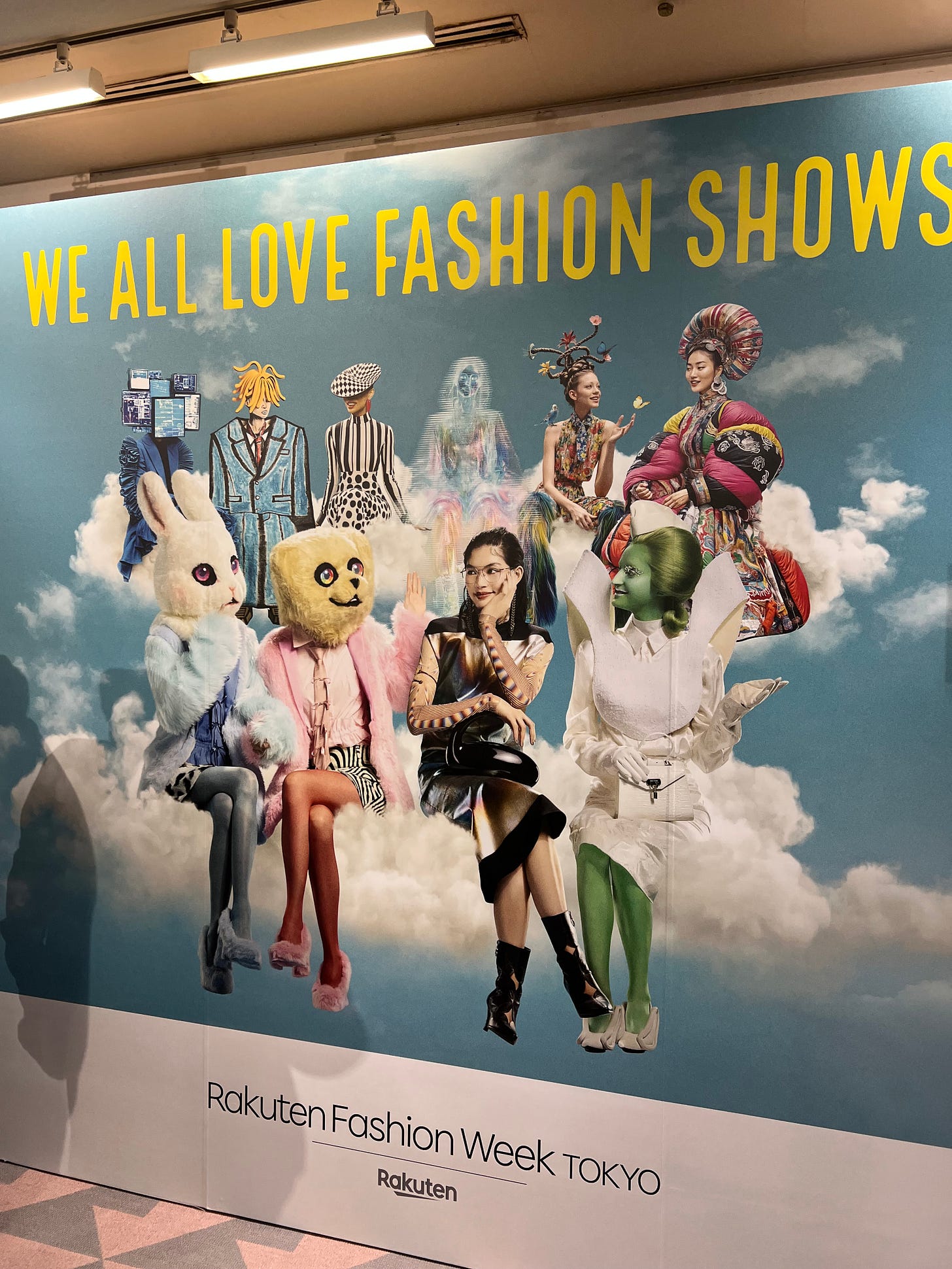2025 A/W Tokyo Fashion Week
Attending my first fashion week was nothing short of a dream come true.
This is the second installment in a three part series. Click here for part one (an overview of how Japan became a luxury mecca).
Since becoming a fashion writer, I’ve created a relatively long list of goals and metrics that I’d like to hit in the short and long-term (yes, I know my Type-A is showing.) Some of them are tied to building this newsletter into a full business and what I want to offer this community, but others allow me to dive deeper into my passion and be able to share it with you. Fashion weeks are some of the most sought after events in the industry and their exclusivity require surmounting a very high bar for a press pass. On February 13th, while battling a terrible case of the flu, I woke up to an email stating I had been given media credentials for Tokyo Fashion Week. Beaming with excitement and, if I’m being honest, the slightest bit of trepidation, I booked my flight and hotels. I was on my to visit Japan for my first live event.
Tokyo Fashion Week was established in 2005 by the Japan Fashion Week Committee. Over the years it has swelled in popularity and is now the largest fashion week across all of Asia. Rakuten has been the name sponsor since 2019 as the company moved to take a stronger foothold within the industry and its merchants around the world. While there were so many different events to highlight, I’ve boiled them down to my top three favorites.
Opening Party & The Prize Of Tokyo
I always love going to an opening party for any conference/event regardless of the topic. The energy is high, there are always previews of what’s to come, and people haven’t become burnt out on networking yet. This year’s Tokyo Fashion Week Opening Party took place in the city’s Sprial Building. Also known as the Wacoal Art Center, the alluring multi-story space is home to various art installments year-round and provides the perfect venue for fashion events. After walking in, I was warmly greeted by the staff and escorted to the third floor where the first part of the event took place. The floor had two different media walls that would be used shortly for interviews. We were then led into a dimly lit ballroom that was filled with mannequins dressed in various pieces from Ssstein, who won this year’s Prize of Tokyo. A few minutes later, the lights were turned off and we were shown a version of their fashion show from an earlier fashion week.
After the show ended, the press was given exclusive access to ask questions to Kiichiro Asakawa, ssstein’s creative director. The Prize of Tokyo award isn’t just for bragging rights. The winner was given the opportunity to present their line during Paris Fashion Week. While Japanese brands like Comme des Garçons and Issey Miyake have cemented their names in the world of high fashion, the same can’t be said for the vast majority of brands from the region. This gave ssstein a fantastic awareness opportunity for the brand and its home country. Kiichiro admitted he was a little nervous about the opportunity but knew how important it was and what it represented.

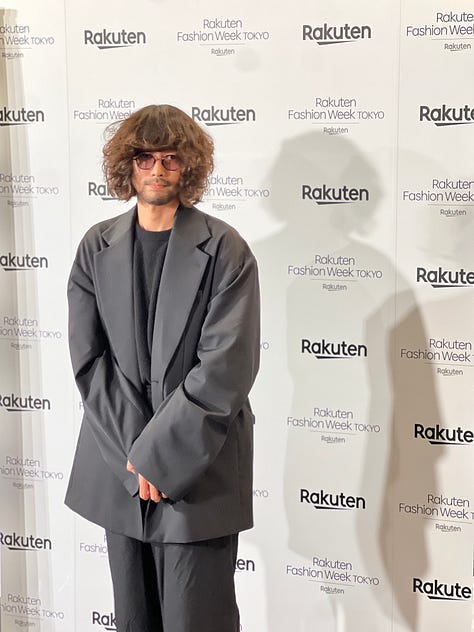
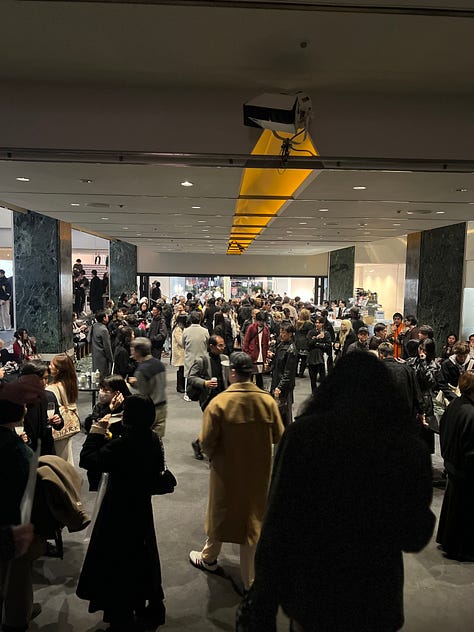
Runway Show - Satoru Sasaki
Thursday brought along a change of pace with one of my favorite shows of the week from Satoru Sasaki, a brand created in 2019 that touts a mix of men’s and women’s ready to wear clothing. The runway was held in Tokyo’s Toda Building. The high-rise is a mix of art gallery and event spaces (floors 1-6) and office spaces available for lease (floors 8-27). After taking the escalator a few floors up, we were shepherded into an extremely long and narrow room where the show would take place. The turn of the runway was packed with photographers, while the elongated front row was filled with industry heads. Satoru Sasaki had an interesting take with textures and bringing the metaphorical to the physical. Instead of having flowery dresses, they literally had pieces composed of multi-colored roses. While some outfits might remind you of a painting, they added actual canvases to the outfits the models wore. The background music had a very loud bass that inadvertently gave the models the perfect cadence to walk to. The color palate was simplistic but the colors themselves were radiant.
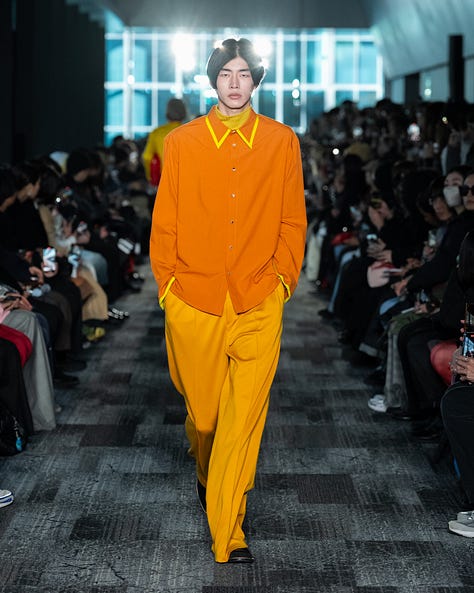
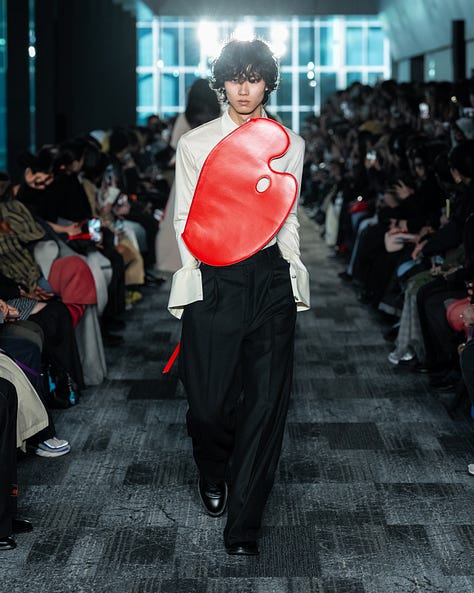
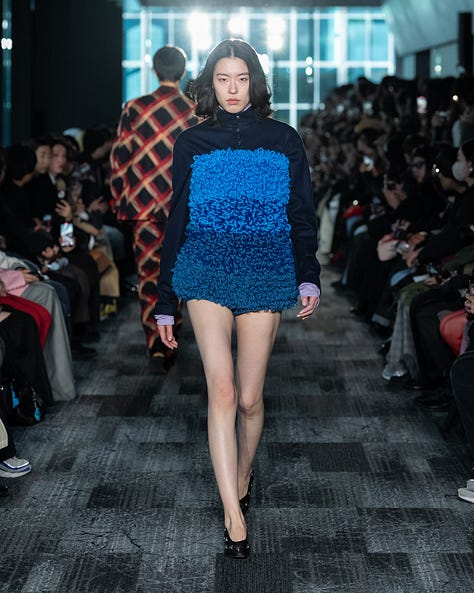
Runway Show - Kamiya
More and more brands are starting to put significantly more effort into the location and set design of their runway shows. Koji Kamiya and his team accepted the challenge and absolutely delivered. Their runway was held within the indoor portion of the City Circuit Tokyo Bay, a racetrack for EV go karts. Onlookers were lined up behind and sat on top of the side bumpers that were turned into seats. A punk rock song started playing loudly as the show began, and featured music that perfectly matched the aesthetic of the pieces featured. While I enjoy seeing interesting clothes that imitate art, I can equally appreciate runway styles that people would actually wear out and about. The models seemed like they were transported from a number of real life scenarios of everyday people. The color palette was reminiscent of a more rugged lifestyle with just the right amount of leather. As the show ended, the models all came out on bicycles to do their final lap, made a lap through the outdoor course, biked away.
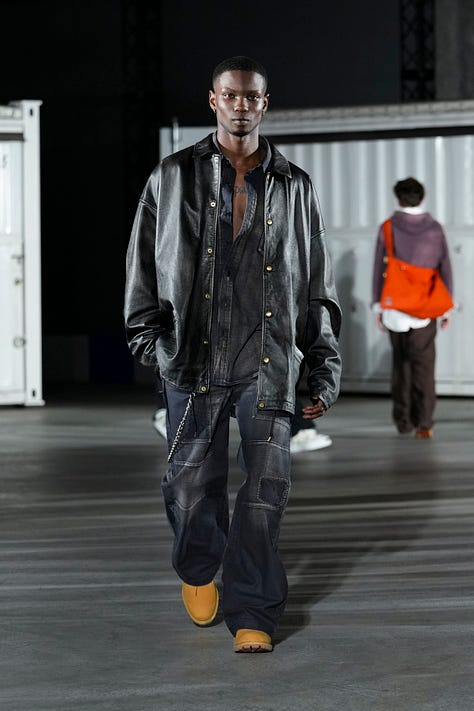
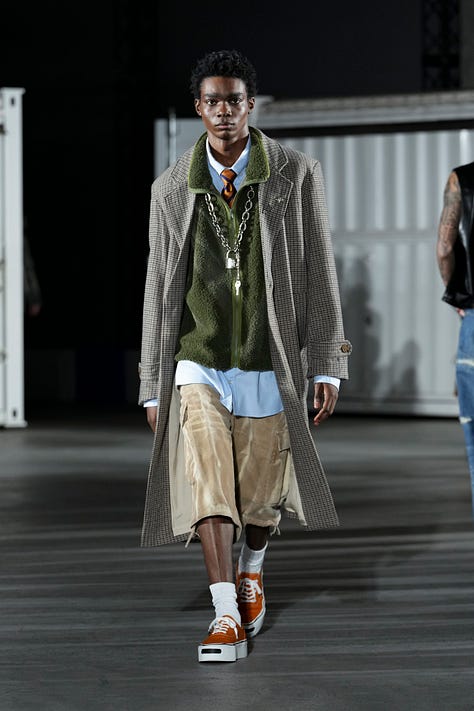
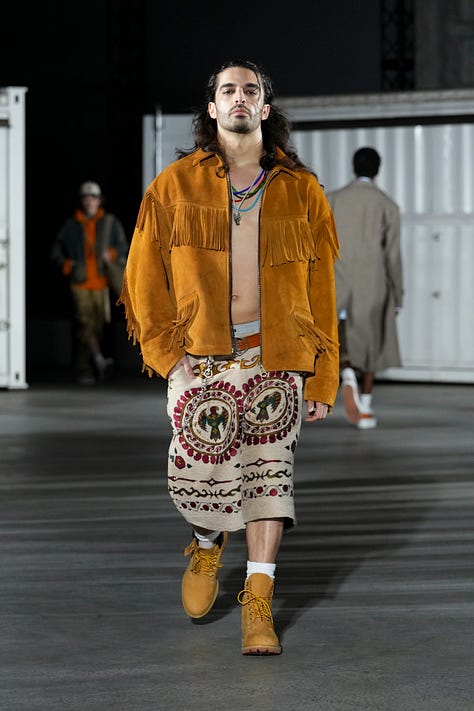
Overall I can confidently say this was one of the coolest experiences I’ve ever had in one of my favorite cities. Brands from overseas are starting to join in on the event with guests spots, including Paul Smith this season. Tokyo Fashion Week continues to shine and I’m glad I was given the chance to witness its growing momentum.


